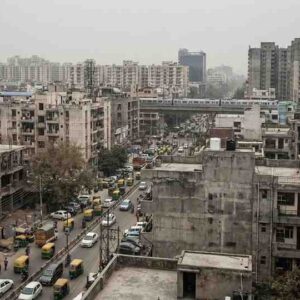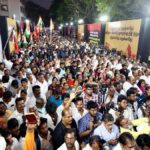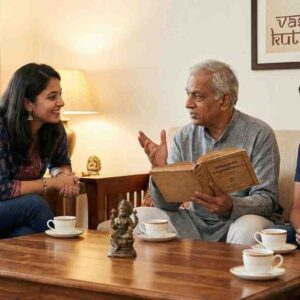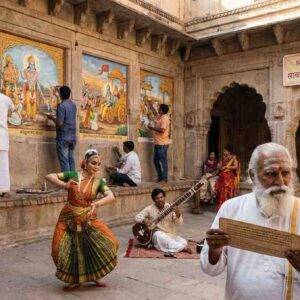A Historical Perspective on Social Stratification
Uttar Pradesh (UP), often regarded as the microcosm of India, reflects the deep-rooted complexities of caste and class divides that have shaped its society for centuries. From the rigid hierarchical systems codified in ancient texts to the modern-day political mobilizations based on caste and economic status, the interplay between caste and class continues to define social, political, and economic dynamics in the state. These divides are not merely structural but philosophical, representing contrasting ideologies about equality, privilege, and social justice.
Key Metrics on Caste and Class in Uttar Pradesh
- Caste Composition:
- Dalits: 21%
- Other Backward Classes (OBCs): Over 40%
- Upper Castes: Approximately 20%
- Scheduled Tribes (STs): Less than 1% (Census 2011).
- Economic Disparities:
- Rural poverty rate: 30%
- Urban poverty rate: 26% (NITI Aayog Report 2023).
- Per capita income: ₹70,000 annually, significantly below the national average of ₹1,35,000 (UP Economic Survey, 2023).
The Philosophical Underpinnings of Caste and Class Divides
1. Caste as a Socio-Religious Framework
- Historical Context:
- The caste system, rooted in Hindu philosophy, divides society into hierarchical groups with distinct roles and privileges.
- Brahmins, Kshatriyas, Vaishyas, and Shudras formed the traditional hierarchy, with Dalits and Scheduled Tribes often excluded altogether.
- Contemporary Reality:
- Despite legal measures to abolish untouchability and promote equality, caste remains a defining factor in social interactions, marriage, and community affiliations.
- Affirmative action policies, such as reservations in education and employment, have brought some progress but also stoked resentment among upper castes.
2. Class as an Economic Construct
- Emergence of Class Divides:
- Post-independence economic policies emphasized industrial growth and land reforms, creating a new class of rural landlords and urban industrialists.
- Urbanization and globalization have widened the gap between wealthy urban elites and the rural poor.
- Intersection with Caste:
- In UP, caste and class often overlap, with upper castes dominating wealth and land ownership, while lower castes struggle with poverty and limited opportunities.
Caste and Class in Politics and Society
1. Political Mobilization
- Caste-Based Alliances:
- Parties like the Bahujan Samaj Party (BSP) and Samajwadi Party (SP) have built their voter bases around Dalits and OBCs, respectively, challenging upper-caste dominance.
- The BJP has successfully created a coalition of upper castes and sections of non-Yadav OBCs, redefining caste dynamics.
- Class Appeals:
- Welfare schemes like free ration distribution and housing subsidies aim to address economic inequities, appealing to the poor across caste lines.
2. Social Movements
- Caste Movements:
- The Dalit rights movement, inspired by B.R. Ambedkar, continues to challenge discrimination and demand equitable representation.
- Class Struggles:
- Farmer protests and labor movements in UP reflect growing discontent among economically disadvantaged groups, irrespective of caste.
3. Urban-Rural Divide
- Economic Inequality:
- Urban areas like Lucknow and Noida enjoy better infrastructure and economic opportunities, while rural regions like Bundelkhand face persistent poverty and underdevelopment.
- Caste Persistence:
- In rural UP, caste hierarchies remain entrenched, dictating access to resources, education, and even justice.
Efforts to Bridge the Divides
1. Legal and Policy Interventions
- Caste:
- Reservation policies in education, employment, and political representation have empowered Dalits and OBCs but face criticism for perpetuating identity politics.
- Class:
- Economic measures like One District, One Product (ODOP) aim to create jobs and reduce rural-urban disparities.
2. Grassroots Activism
- Caste Movements:
- NGOs and activists work to raise awareness about caste discrimination and promote inter-caste marriages.
- Class-Based Initiatives:
- Cooperatives and self-help groups aim to empower economically marginalized communities, particularly women.
3. Educational Reforms
- Universal Access:
- Expanding school enrollment and skill-development programs can help bridge both caste and class divides.
- Caste Awareness:
- Curriculum reforms that highlight the contributions of marginalized groups can foster a more inclusive mindset.
Challenges in Addressing These Divides
- Perpetuation of Stereotypes
- Caste and class identities are often reinforced by social practices and media narratives, making change difficult.
- Resistance to Reform
- Upper-caste groups frequently oppose affirmative action policies, while class-based redistribution faces pushback from urban elites.
- Political Instrumentalization
- Political parties often exploit caste and class divides for electoral gains, hindering efforts toward social cohesion.
Conclusion: Toward a More Equitable Society
The divides of caste and class in Uttar Pradesh reflect a complex interplay of historical, social, and economic factors. While significant strides have been made through policy interventions and grassroots activism, these divides remain deeply entrenched in many aspects of life.
For UP to move toward a more equitable society, it must prioritize inclusive policies that address both caste-based and economic inequalities. Encouraging cross-community dialogue, strengthening education, and ensuring equitable access to resources are essential steps in bridging these divides. Only then can UP evolve into a society where opportunities and rights are determined not by birth or wealth but by merit and equity.












